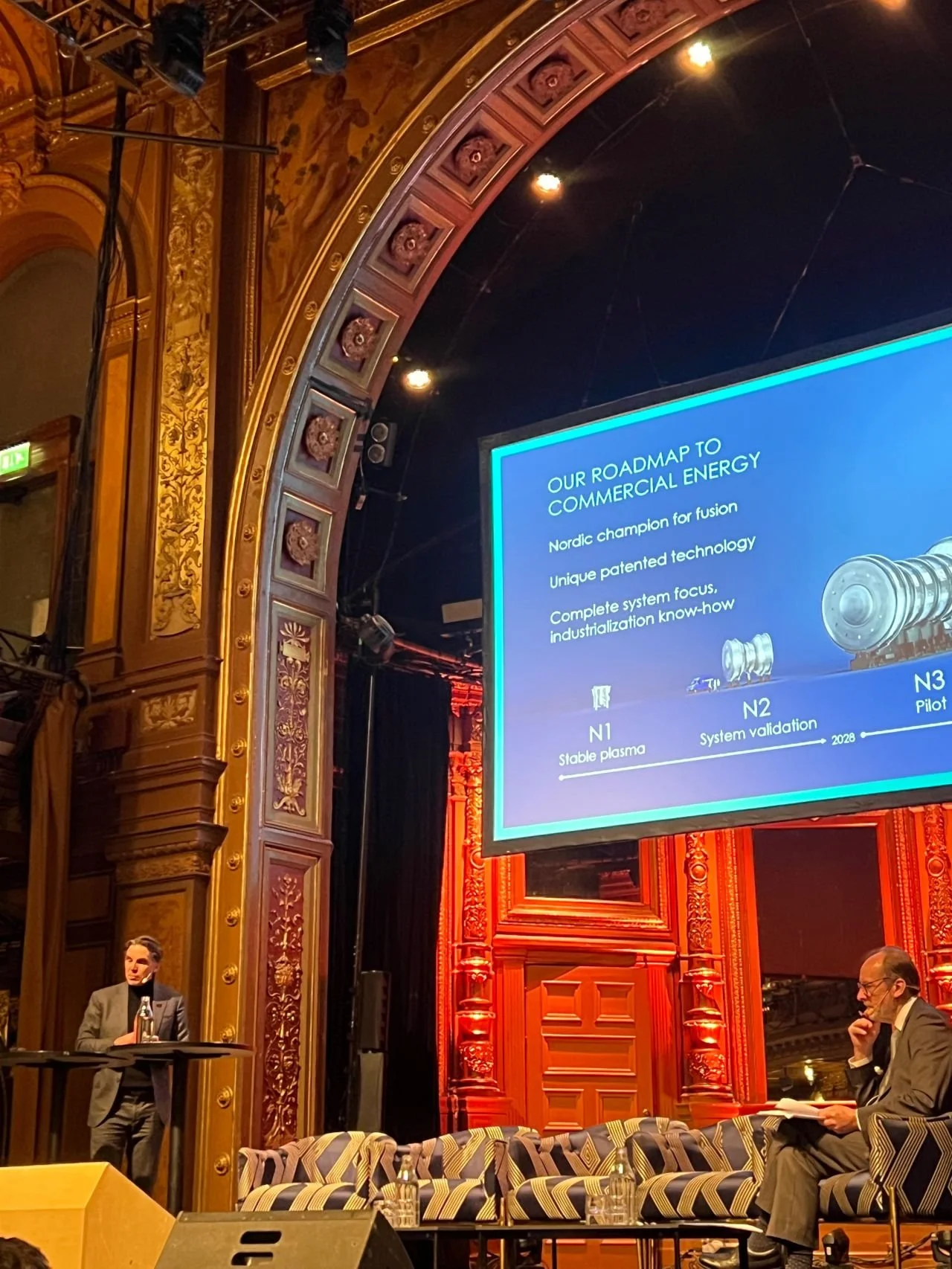Fusion Energy Takes the Stage at The Economist’s “The World Ahead 2025” in Stockholm
In a world facing increasing energy demand, geopolitical instability, and the urgent need for clean power, fusion energy comes with hope. As one of the most significant trends shaping the future, it has the potential to transform global energy systems and drive a sustainable transition.
On January 15th, The Economist hosted its “The World Ahead 2025” event at Berns in Stockholm, Sweden, bringing together over 300 influential leaders—including CEOs, political and business decision-makers, investors, founders, and futurists. Among the key topics of the day was the future of energy, where Novatron Fusion Group (NFG) had the honour of presenting fusion energy as a pivotal solution for a cleaner, more secure world.
The event tackled a wide range of topics, offering insights into global security and defense, with geopolitical updates on Ukraine presented by Andrii Plakhotniuk, Ambassador Extraordinary and Plenipotentiary of Ukraine to the Kingdom of Sweden, and Emanuel Sidea, U.S. Correspondent for Dagens Industri in New York. Panels throughout the day explored foreign policy and trade dynamics anticipated in 2025, alongside discussions on technological breakthroughs in AI and quantum computing.
A major focus, however, was on the urgent energy and climate challenges, with The Economist highlighting fusion energy as one of the most transformative trends shaping the future. Against this backdrop, Novatron Fusion Group’s co-founder and chair, Erik Odén, joined by CEO Peter Roos, shared insights into the latest developments in the global fusion energy sector, highlighting significant milestones, and future projections.
Keynote: Hope Through Fusion Energy
Representing NFG, co-founder and chair Erik Odén delivered a keynote presentation providing a global overview of the fusion energy industry, currently driven by approximately 45 initiatives worldwide. He explored the rich history of fusion research, its recent breakthroughs, and its accelerating momentum, positioning fusion energy as a reality by the 2030s. Erik shared updates on NFG’s advancements, including the commissioning of NOVATRON 1 at KTH Royal Institute of Technology in Stockholm. NOVATRON 1 aims to address the critical challenge of plasma confinement with Novatron’s unique design offering a promising solution.
Erik began his presentation with a hopeful message: “I come with hope,” reflecting on fusion energy’s potential to tackle the dual crises of rising energy demand and geopolitical tensions, while emphasizing fusion’s potential to transform the global energy landscape. His address set the stage for a dynamic panel discussion moderated by The Economist's Alasdair Ross, the countries editor for The Economist's future forecast, highlighting the need for international cooperations to make fusion sooner.
Panel Highlights: Collaboration for Fusion Energy
The panel brought together NFG’s CEO Peter Roos, SVT’s senior tech and business correspondent Alexander Norén, and the UK’s ambassador to Sweden, Samantha Job, for a discussion on the intersection of geopolitics, business, and technology in advancing fusion energy.
Peter Roos opened by sharing Novatron Fusion Group's latest progress, ”There are milestones and advancements already being made in 2025 in fusion develpement. NFG, for example, will have some really interesting results to share from our work at KTH Royal Institute of Technology.”
He also emphasized NFG’s global collaborations and the growing international efforts to address the technical, financial, and political challenges of fusion energy. He underscored fusion’s critical role in tackling the global energy transition and its potential to reshape the future energy landscape.
Adding to the conversation, Alexander Norén compared the transformative potential of fusion energy to that of AI, stating, “Fusion has the same transformative potential as AI. Compared to AI investments, billions into fusion energy development represent an underfunded opportunity.”
Samantha Job then emphasized the importance of cross-border collaboration in academia, business, and public partnerships to make fusion sooner, citing the collaboration between the UK and Swedish Novatron Fusion Group as a great example. This collaboration, part of a broader agreement announced in June 2023 to work on ten areas of mutual interest, includes fusion energy and a Memorandum of Understanding (MoU) between UKAEA and NFG. This collaboration has already yielded significant advancements, such as the TauEB project, funded by the prestigious EIC Pathfinder Program, which focuses on enhancing plasma confinement time (τE)—a key breakthrough for achieving commercially viable fusion energy.
Reflecting on the partnership, Samantha Job remarked, “Sweden has a long history in fusion development and an innovative culture, and therefore we see that there is a natural partnership”.
2025 and Beyond: A World Built on Collaboration
The event highlighted key trends already shaping 2025, including escalating geopolitical tensions that underscore the urgent need for global cooperation—not only in defense and trade but also in addressing humanity's greatest challenge: the climate and energy crisis.
Amid these challenges, there were lights of hope. Novatron Fusion Group’s representatives emphasized the promise of fusion energy as a solution to the energy crisis, while many participants applauded the growing international collaborations across academia, public, and private sectors. These partnerships are finding new ways of working together in a complex and turbulent world. Collaboration—a recurring theme throughout the event—is poised to be a defining word of 2025 and hopefully for many years to follow.



